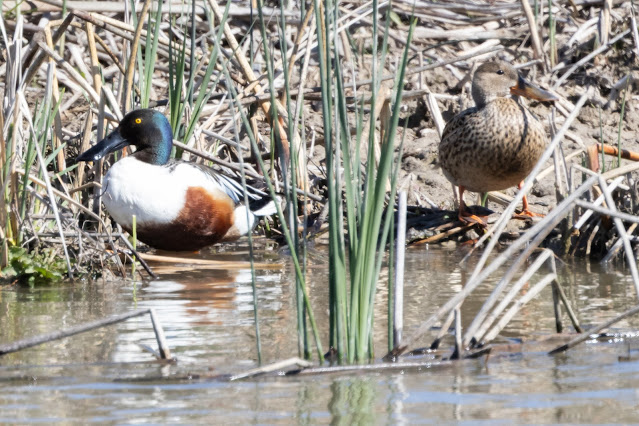Male American Kestrel-Falcon (2 images)
 |
I captured these photos recently at the Farmington Bay Wildfowl Management Area. The information below is from the Cornell Lab of Ornithology (via eBird.com) and Audubon.com.
The smallest falcon, the kestrel is also the most familiar and widespread in North America. In open country it is commonly seen perched on roadside wires, or hovering low over a field on rapidly beating wings, waiting to pounce on a grasshopper. Kestrels nest in cavities in trees; in places where there are few large dead snags to provide nest sites, they may rely on nesting boxes put up for them by conservationists.
The slender American Kestrel is roughly the size and shape of a Mourning Dove, although it has a larger head; longer, narrow wings; and long, square-tipped tail. In flight, the wings are often bent and the wingtips swept back. They are pale when seen from below and warm, rusty brown spotted with black above, with a black band near the tip of the tail. Males have slate-blue wings; females’ wings are reddish brown. Both sexes have pairs of black vertical slashes on the sides of their pale faces—sometimes called a “mustache” and a “sideburn."
American Kestrels are gracefully buoyant in flight, and are small enough to get tossed around in the wind. When perched, kestrels often pump their tails as if they are trying to balance. You’re most likely to see them perching on telephone wires along roadsides, in open country with short vegetation and few trees.
Their diet consists mostly of large insects; also some small mammals, birds, or reptiles. Grasshoppers are among the favored prey, but many other large insects are taken, including beetles, dragonflies, moths, caterpillars, others. Also feed on mammals (including voles, mice, and sometimes bats), small birds (sometimes up to the size of quail), lizards, frogs, earthworms, spiders, crayfish, other items.




Comments